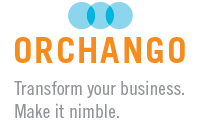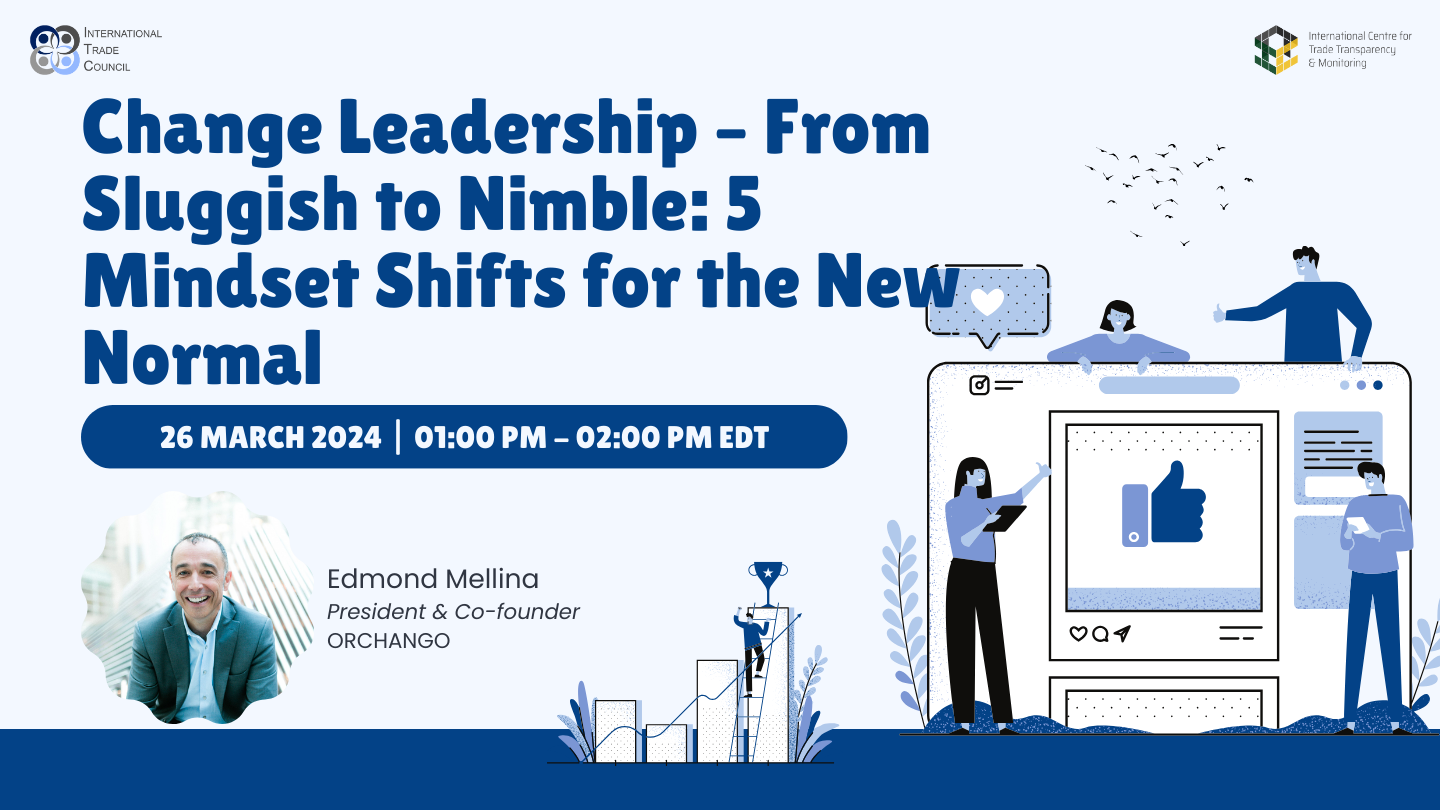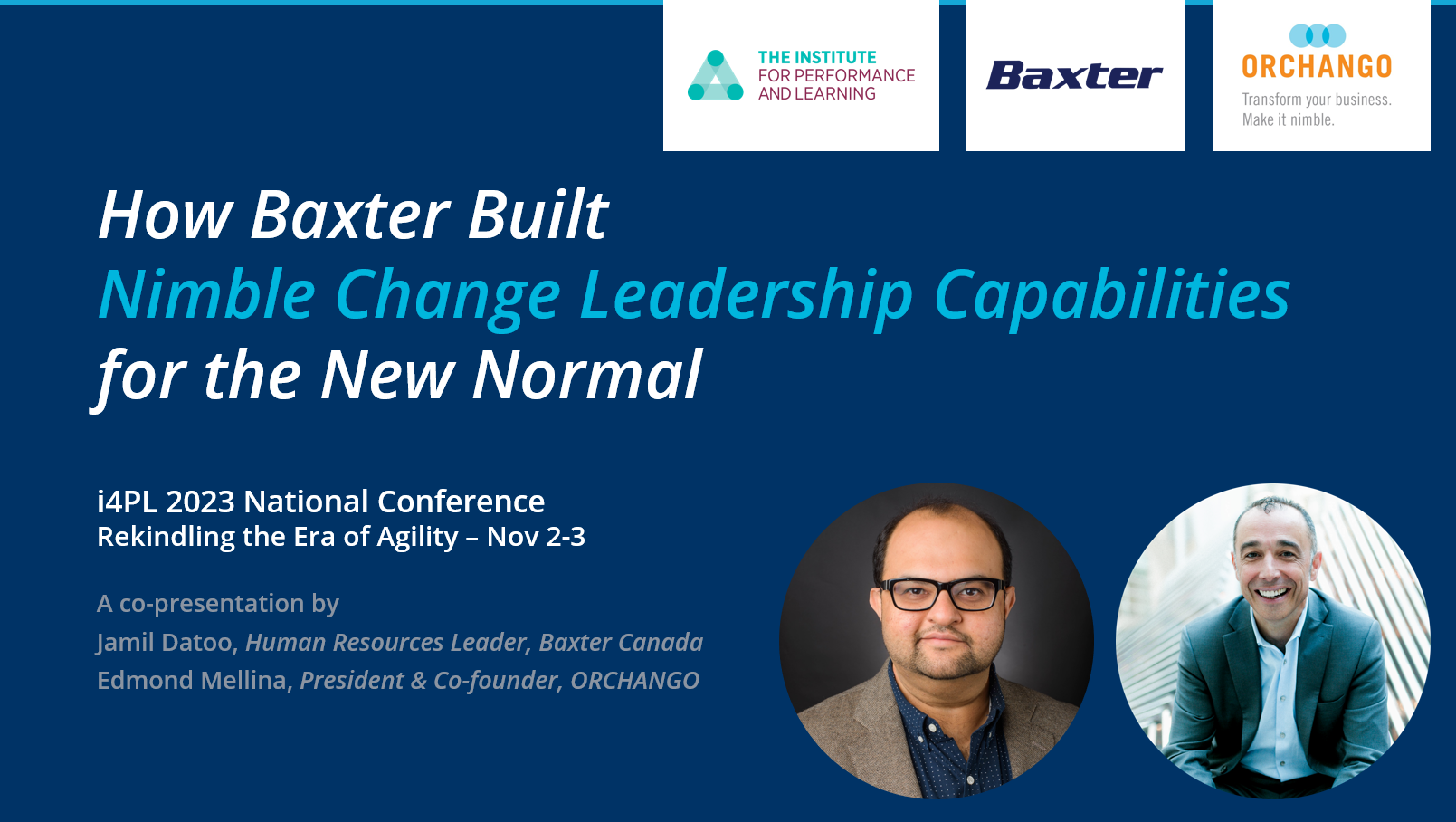When talking with C-suite executives and other transformation leaders about leading through change in the…
Stage 2 | BUILD UP: from barely moving to rapidly gaining altitude

Aircraft analogy: the take off = Stage 2 | BUILD UP
With this post, we are continuing our blog series on change management capability building. We will discuss the second stage of our 4-stage model (see figure) – Stage 2 | BUILD UP – which is characterized by a structured and focussed effort throughout the organization. It represents a critical step toward threading change management into the corporate culture.

Earlier in this BLOG series
Before we dive into Stage 2, let’s remind our readers of the previous posts:
- We started by providing an overview of our 4-stage model. We discussed how an organization’s CM-Score™ – a special metric generated from our CHECK UP!™ survey – evolves as it progresses from stage to stage. To help explain how the change management capability building journey unfolds in the real world, we introduced the analogy of an airliner taking off (hence the above photo).
- The second blog post focussed on Stage 1 | LAG BEHIND, which is where most organizations start their capability building journey (that article features an audit worksheet and a quick poll that readers can use to assess and benchmark their respective organizations).
- In the third post, we introduced the “GOV-AGEN” client case. We explain that this government agency was lagging significantly behind in its ability to manage change. We described the events and experiences that prompted the executive team to embark on a multi-year capability building journey.
Two critical questions about Stage 2 | BUILD UP
As you read this article, you will be able to answer the following questions:
- How can we tell whether our organization is in Stage 2 | BUILD UP? Hint: use the audit worksheet below…
- If our organization is in Stage 2 | BUILD UP, what should we do in order to move to Stage 3 | SUSTAIN? Hint: use the capability building priorities listed near the end…
Stage 2 | BUILD UP in a nutshell
Below is a brief description of Stage 2:
- Overview: The organization embarks on a structured and focused effort to build up its change management capabilities.
- CM-Score™: -0.5 to +2.5
- Typical duration: 1 to 2 years
As you can see on the 4-stage model (figure), it takes time for an organization’s change management capabilities to start increasing – despite the structured and focussed effort started at the beginning of Stage 2. However, once the organization reaches the point of curvature, its CM-Score™ raises rapidly. It is important to keep in mind this key aspect of Stage 2.
From barely moving to rapidly gaining altitude
The airliner analogy helps better understand how Stage 2 | BUILD UP unfolds.
Act I – Before the take-off [of the CM-Score™]
The plane is now first in line at the start of the runway, ready to go. The control tower gives clearance and the pilot opens the throttle fully. Everything starts vibrating; there is a lot of noise; and the engines are burning vast amounts of kerosene. Yet, the plane is barely moving. After a moment, the aircraft finally starts to pick up some speed on the runway; but it doesn’t gain any altitude. A few passengers are worrying that the plane might not take off before the end of the runway!
Similarly, the first half of Stage 2 | BUILD UP is characterized by significant capability building activities. Yet, the organization doesn’t seem to become better at managing change. Actual measurements (e.g. via our CM-Score™ or other instruments) will usually confirm this impression. In other words, the organization is not gaining any “altitude” yet on the y-axis – despite all the efforts! As a result, executives and other stakeholders might start wondering: “Is this capability building thing a waste of time and money?” These folks are like the worried passengers in the aircraft.
However, the pilot in the cockpit remains calm and confident: he/she has done it before; all the instruments on the dashboard indicate that everything is fine. We just have to let the takeoff process follow its course.
When working on building the change management capabilities of client organizations, ORCHANGO is that pilot in the cockpit.
We keep the S-curve of our model top of mind. We look for signals – often invisible to our clients – that things are moving in the right direction (the most critical signals are listed in the worksheet that follows). In order to reassure worried executives and other stakeholders, we remind them of the 4-stage model; we explain that Stage 2 | BUILD UP unfolds in two separate acts; we point to the signals that indicate progress on the S-Curve of the model.
Above all, we reinforce the key message below (rule of thumb: repeat it seven times so that it sinks in).
Message to worried executives and other stakeholders: Be patient. Things are actually moving in the right direction. We are getting closer to the point when your CM-Score™ will take off. Once we get there, the change management capabilities of your organization will raise rapidly as a result of all the efforts. Remember, it’s a build up.
Act 2 – After the take-off [of the CM-Score™]
Indeed, as the plane gets closer to the dreaded end of the runway, magic happens: the nose wheels lift off the ground; the rear wheels soon follow; the aircraft leaves the airway and rapidly gains altitude. The worried passengers are starting to relax.
Similarly, as the organization reaches the exponential / mid-way portion of Stage 2 | BUILD UP, the executives and stakeholders who were concerned about the outcome of the capability building efforts are starting to feel better about it.
After the rapid ascent of the take-off, the aircraft continues to gain altitude – albeit at a less aggressive rate. Eventually, it reaches the cruising altitude. At that time, the pilot’s focus switches to maintaining altitude and navigating the route.
Likewise, the organization continues to strengthen its change management capabilities as it completes Stage 2 | BUILD-UP – en route to Stage 3 | SUSTAIN.
Audit worksheet – are we in Stage 2 | BUILD UP?
The audit worksheet below lists the most typical signals that indicate the organization is progressing through Stage 2 | BUILD UP. The 12 symptoms fall into the following categories:
- Culture / mindset;
- Strategic planning; and
- Change execution.
Of course, compared to our CHECK UP™ survey, the worksheet below is a very basic tool. Nevertheless, it constitutes a quick way to assess whether your organization is in Stage 2 | BUILD UP and how it is progressing.
You might want to ask a couple of colleagues (ideally from other functions) to do the same exercise. Indeed, this is not exact science and having different perspectives will provide a more accurate assessment for your organization. Furthermore, if you select your colleagues wisely it will be easier for you to reinforce the capability building campaign: for example, reach out to people who can influence the executive / leadership team; or, even better, give a copy of the worksheet to some of the most influential executives / leaders. After all, the journey towards world-class change management capabilities is itself a transformation. Hence, think as a change leader and above all, act accordingly!
Instructions
- First, score the extent to which each statement applies to your organization (select the most appropriate score on the 1-to-5 scale with 1 = “No yet” and 5 = “Most definitely”).
- Second, tally up your organization’s scores and read the interpretation of the overall score.
| Culture / mindset | ⇐ Not yet | Most definitely ⇒ | |||
|---|---|---|---|---|---|
| 1. A “Partners in Change” mindset is starting to replace the “Us vs. Them” mindset that existed between organizational levels; functions; and/or geographies. | 1 | 2 | 3 | 4 | 5 |
| 2. Leaders at all levels are starting to recognize the value of effective change management. They talk positively about it. | 1 | 2 | 3 | 4 | 5 |
| 3. Senior managers are acknowledging that “not supporting change” doesn’t necessarily mean “being against the organization”. In particular, they are starting to realize the importance of building genuine buy-in among the managers of the groups impacted by change. Increasingly, they recognize that the time and effort it takes to do so is a critical investment. | 1 | 2 | 3 | 4 | 5 |
| Strategic planning | ⇐ Not yet | Most definitely ⇒ | |||
| 4. Key change management principles, tools and considerations are being embedded into the strategic planning process. | 1 | 2 | 3 | 4 | 5 |
| 5. The strategic plan becomes better aligned with the organization’s real ability to execute; as a result, the need for re-prioritization is starting to decrease. | 1 | 2 | 3 | 4 | 5 |
| 6. New fiscal years start with higher and more genuine buy-in from all management levels regarding the business plan / strategic initiatives. The execution unfolds closer to the plan, with less “catch-up” during Q3 and Q4. | 1 | 2 | 3 | 4 | 5 |
| Change execution | ⇐ Not yet | Most definitely ⇒ | |||
| 7. Leaders and project teams are taking a more balanced view when executing and monitoring change – focusing on both the technical and people dimensions of change; they are becoming increasingly more effective at it. | 1 | 2 | 3 | 4 | 5 |
| 8. Effective engagement and 2-way communications are replacing the rumour mill as the first source of information about new change initiatives (both positive or negative change). | 1 | 2 | 3 | 4 | 5 |
| 9. Among project teams, “change management” now means more than basic “stakeholder communication” and “training”. | 1 | 2 | 3 | 4 | 5 |
| 10. Senior management is working harder at creating the necessary conditions for managers at all levels to genuinely support and champion change. | 1 | 2 | 3 | 4 | 5 |
| 11. Change teams, executive sponsors and local leaders are working more effectively / closely throughout the execution of change (“Partners in change mindset”). | 1 | 2 | 3 | 4 | 5 |
| 12. Resistance to change is starting to decrease; implementation is less rocky; productivity during change (including post- “Go Live”) doesn’t dip as much as before. | 1 | 2 | 3 | 4 | 5 |
|
OVERALL SCORE ⇒ |
|||||
| Overall score | Interpretation | Implications / next steps |
|---|---|---|
| 12-35 | Not ready to take off just yet– Either your organization is on the front-end of Stage 2 | BUILD UP… or it is still stuck in Stage 1 | LAG BEHIND! | Keep working on your structured effort… or launch one if you are still in Stage 1! Refer to the capability building priorities listed further below. Remain focussed and be patient – your efforts should eventually be rewarded with a nice take off of your organization’s CM-Score™ . |
| 36-47 | Taking off – Your organization’s change management capabilities have started raising significantly, or they are about to do so. | Enjoy the fruits of all your capability building efforts to-date. But please, don’t rest on your laurels and keep working on the capability building priorities listed further below. Also, leverage the success stories to reinforce your capability building campaign. |
| 48-60 | Working on gaining altitude – Your organization is approaching the end of Stage 2 or has already moved beyond it. | Keep working on the capability building priorities listed further below. If you believe you have tackled them fully, then go to Stage 3 | SUSTAIN (our clients do that when their CM-Score™ is around +2.5). |
Capability building priorities for Stage 2 | BUILD UP
Listed below are the most typical priorities for an organization in Stage 2 | BUILD UP. By focusing on them, your organization can progress through the stage and ready itself for the next chapter of its change management capability building journey – i.e. Stage 3 | SUSTAIN.
- Select and adopt a proven / standardized change management methodology featuring a practical, battle-tested toolkit.
- Enroll all levels of management in an action-learning program designed to learn the methodology / toolkit while managing real change – large and/or small; positive and/or negative.
- Experiment with one or a few initiatives: manage them with a stronger emphasis on change management; do things differently than in the past; and monitor the results.
- Select a high-profile, complex change initiative; enroll the change team and change agents in an advanced action-learning program on the methodology; ensure the learning program is anchored to the timeline of the change initiative; apply the selected methodology / toolkit to ensure a successful outcome.
- Use a survey-type instrument to start measuring your organization’s change management capability at regular intervals (baseline at the beginning of Stage 1; another measurement six months later; then once a year until you reach Stage 3 – INGRAIN, at which time you could lower the frequency to once every 18 months); make sure the survey is designed based on the tools and principles of the selected change management methodology.
- Start integrating the change management methodology, toolkit and survey into key change-related processes / methodologies – at a minimum: a) strategic planning; b) leadership competency and performance management; and c) project / program management.
- In term of change management education, your next priority should be to start rolling out a learning program for employees.
By focusing on these priorities our clients eventually reach a CM-Score™ of +2.5, at which point they are ready to move to Stage 3 | SUSTAIN.
Upcoming blog post
In the next article of this series, we will further discuss the importance of managing expectations through Stage 2 | BUILD UP – from barely moving to rapidly gaining altitude. We will go back to the “GOV-AGEN” client case to reinforce the key message we highlighted earlier (see “Key message to worried executives and other stakeholders” above). We will share other client stories.
Until then, please continue posting your thoughts, questions or challenges in the comment section at the bottom. Use the “comment subscription” feature to stay tuned in to the conversation. As usual, I am looking forward to reading your thoughts, discussing your views and answering your questions. As I said before, we are committed to evolving this blog series based on our discussions!!
Copyright © 2014 by ORCHANGO. All rights reserved. | Photo credit: ©istock.com/Boarding1Now




Another great article Edmond,
I have a question about the surveys. How far down the ladder would you go in getting realistic responses from the organization? Is it everyone or do you stop at management (all levels).
Thanks for the feedback Marc.
If your question is referring to our CHECK-UP!™ survey (or a similar tool designed to assess / drive OCM capabilities), then it’s important to invite all levels in the organization to participate. That’s the only way we can draw an accurate picture of the organization’s change management capabilities and its CM-Score™. Stopping at management would give you a skewed picture. Of course, the idea is to slice the data to extract maximum value from the responses. For example, in addition to producing an overall CM-Score, we calculate the CM-Score of each business unit, function, department, etc. We can compare the views of employees vs. management. Also, the questionnaire is designed to tell us precisely those aspects of change management that are going well vs. the ones that need more attention. Based on these insights, we can give the organization a prioritized roadmap to keep moving forward on the S-Curve (see model).
However, if your question is referring to the audit worksheet in the above article, then it’s a different story. It’s simply a quick assessment tool. The objective of the worksheet is to answer two basic questions: Are we in Stage 2 | BUILD UP? If yes, are we before or after the critical “take off” point? Hence, the worksheet is not intended to be used widely. First and foremost it’s a tool for someone working on building the CM capability of the organization – or someone interested in making it happen. As I pointed out in the article, it’s a good idea to have some of your colleagues use the worksheet and then compare notes. My recommendation would be to give it to a handful of folks – for example: a manager and an employee impacted by change; someone in the project teams driving some of these changes; an executive sponsor; and someone working in HR who has good insights into the way your company executes change. Most likely the aggregate picture would be good enough to fuel a valuable discussion internally. But if you get major discrepancies, then you might want to broaden the exercise a little bit more.
I hope this helps?
Cheers, Edmond.